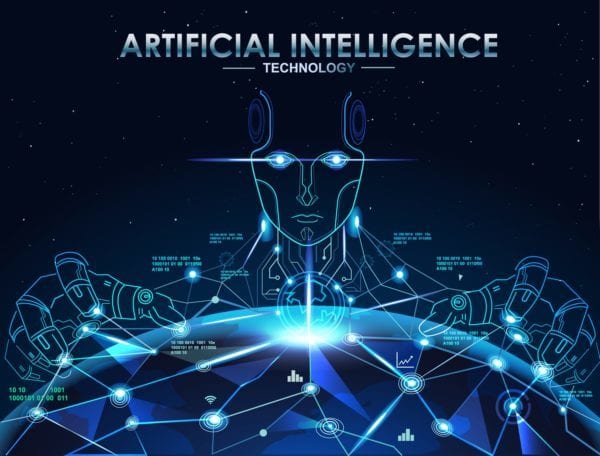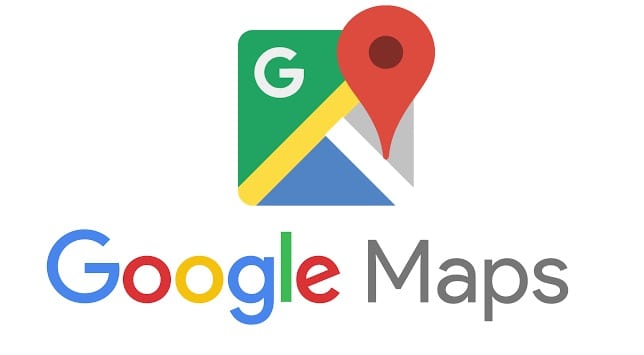How Machine Learning Works, and Why You Better Pay Attention


Remember when we first started hearing about Google and internet marketing? There were a bunch of business owners that refused to get on board. They insisted this internet stuff was just stupid, and they’d only advertise in the yellow pages or in the local news paper. If you’re wondering where those guys are now, well, my guess is they now work for someone that paid close attention to the technology at that time.
YOU’VE GOT 5-7 YEARS
Make no mistake, AI/Machine Learning is the new Google/Internet marketing. Our advice is to pay close attention because you’re about to see a massive change in marketing, and if you’re not ready, you just might not survive the next 5-7 years.


Ten years ago the phrase ‘artificial intelligence’ might have been something you’d expect to hear in a science-fiction movie. Now it’s an everyday reality.
In fact, in the last two years, the demand for people with AI know-how has doubled. And by 2021, 80% of new technology will have a basis in artificial intelligence.
But a lot of people aren’t familiar with the workings of AI technology. You might be picturing robots that can help you pick out what to wear and give relationship advice. But most businesses use AI technologies, such as machine learning, for data processing and profit – as a matter of fact, 37% already do!
Here’s what every business owner and marketing manager needs to know about machine learning.
What Is Machine Learning?
Okay, we get it. This word ‘artificial intelligence’ is new language for most people. If you’re like most people, you’re a little confused, so you’re not alone.


You may be familiar with the terms ‘artificial intelligence’ or ‘machine intelligence’. These refer to the way in which machines can take information from their environment and use it to achieve particular tasks.
This is a useful skill when it comes to problem-solving as computers process information very quickly. In fact, they can manage 10 billion operations per second. And this is vital for machine learning.
Machine learning (or ML) is a subset of artificial intelligence. It involves processing statistical data and creating algorithms. In some areas of business, you might also hear machine learning called predictive analysis.
To do this, computers take data and identify patterns in it. They then use this to complete a task in the most efficient way possible.
But what is unique about machine learning is that computers are able to perform tasks without a specific set of instructions. Instead, they use data-processing to figure out the best way to achieve the desired outcome.
So let’s take a look at just how machine learning works.
Traditional Programming


This is a much simpler form of programming. It involves humans manually inputting data along with a pre-designed program into a computer. The result is output, such as software, a web page, or an online calculator.
100% HUMAN INPUT = FLAWED OUTPUT
Traditional programming requires your input in order to achieve a specific outcome. This means that if your market shifts or a new trend arises, you will have to adjust the input to achieve an accurate output. So you have to take the time to monitor this and make any necessary changes.
But machine learning models can save you this job. Let’s take a look at how this works.
How Machine Learning Works
With machine learning, what you input into a computer changes.
You start by inputting the data along with your desired outcome. Then the computer will design a program or a machine learning model that will achieve that outcome.


There are two different types of machine learning that you’ll come across: supervised machine learning and unsupervised machine learning. Each of them uses data – a key element of machine learning – in a different way.
Supervised machine learning is the more common learning model. It involves inputting model data that a computer can use to create a pattern to program from. This is useful for things like linear regression and image recognition.
Unsupervised machine learning happens when you input data that you haven’t tailored. Instead, the computer works to pick out specific patterns within the data and then uses these to form the program. It will create clusters of data and link up different data points.
This is useful if you want to create a program but aren’t sure which data pattern will achieve your outcome the best.
It is incredibly important to feed the right kind of data into your computer for either of the learning models. Without the right kind of data, your computer will not be able to produce the outcome that you’re looking for accurately. Instead, it will simply use what data it has to produce something close to your desired outcome.
Machine Learning in Action – For Example:
Maybe one of the easiest ways to understand how machine learning words is to look at a machine learning technique in action. So let’s say, for example, you want to create a model that can predict housing prices.


You should start by collecting data on the current housing market. For example, some things you might look at include:
- current housing prices
- square footage of each home
- how much land each home comes with
- how many bathrooms each house has
- how many bedrooms each house has
The list could go on! But having all of this information doesn’t necessarily mean you know how to use it to predict house prices in the future. This is where machine learning can help.
You can input all of this data into a computer along with your desired outcome: ‘predict future housing prices’. The computer will then start drawing links and finding patterns in this data.
For example, if the house price goes up when the number of bedrooms goes up then this is a pattern. This would present itself as linear regression.
Often with linear regression, it is tempting to ‘overfit’ the graph’s line. This means that the prediction line ignores certain data points in favor of ones that fit an identified pattern. But this doesn’t result in an accurate prediction of housing prices in the future, or whatever else you’re trying to identify.
In contrast, machine learning can take things such as loss function into account to create a more accurate prediction. The result is data that you can use in your business strategy moving forward.
And predicting housing prices is just one example of how we can use machine learning!
What Can We Use Machine Learning For?
Spotting and understanding patterns is something that we can use in almost every aspect of our daily lives. So we can use machine learning in plenty of contexts.
For example, machine learning helps apps such as Google maps predict traffic routes accurately. They can identify traffic trends at peak times and recommend the best routes to take at specific times of the day.


Machine learning is also really helpful for security both in-person and online. It can detect patterns of unusual behavior and prevent crimes before they take place. Online these patterns are helpful for identifying fraudulent activity and filtering out malware.


When it comes to business, machine learning is an invaluable tool. It can help to target specific customers with products and services. It can even improve customer service!
Online chatbots are a great way for customers to get in touch with your business quickly. And machine learning allows them to respond with helpful, relevant information in a matter of moments. This might not seem like the most important resource in the world, but good customer service has a massive impact on the success of your business.
One very important way that a business can use machine learning is for their search engine optimization. So let’s take a look at how this works.
Search Engine Optimization and Machine Learning
Search engine optimization, or SEO, is a vital way of ensuring your business’ success.
It involves making sure your company’s website appears high up on a list of search results. By doing this you increase online traffic to your website.
For example, let’s say you run a plumbing business. If someone Googles ‘plumbers near me’ you want your business to at least appear on the first pages of searches. Ideally, you want to appear near the top so potential customers visit your site first.
Several factors affect where you appear on a list of searches. By optimizing all of these factors, your company’s site can rank highly very quickly. These include:
- Meta descriptions
- Pages titles
- Image alt text
- 301 redirects
- Page content
- Page suggestions
- Product recommendations
Let’s take a look at how machine learning methods can help to boost these factors.
How Can Machine Learning Be Used in SEO?


Businesses can use machine learning to automate search engine optimization. The benefits of doing this are three-fold:
- Machine learning works quickly giving you more time to focus on other aspects of your business strategy.
- It can analyze more complicated data patterns to give new insights.
- Automation creates consistently efficient SEO factors and makes necessary adjustments.
AUTOMATE YOUR SEO


For example, let’s say you want to create the best meta descriptions for your webpages. If you have loads of content on each page, this can take a long time and finding an accurate description can be hard.
But with machine learning, you can input the page’s content and set the desired outcome to be the best meta descriptions for SEO. Then, the computer will search and summarize the content for you. You can do a similar thing to automate your webpage titles or image alt text.
Or if you want to produce content for your website for SEO, you can use machine learning to identify keywords or phrases to include in your content. If this is something you’re interested in, then we’d really recommend checking out Talk to Transform.
By using machine learning for search engine optimization you save time (and money) and don’t have to risk hiring a rubbish guy to run your SEO. You can even use the program to search your website for anomalies or to make improvements. This makes staying on top of your business’ SEO a much more manageable task.
Useful Resources for Understanding Machine Learning
If machine learning sounds like something you’d be interested in, then there are a couple of resources you should really check out.


If you want to get to grips with creating your own machine learning models then you should also check out Colab and Jupyter notebooks. Andrew Ng also provides an amazing course on machine learning.
But if you’d rather save time by getting your hands on a summarizer model for your machine learning, then Algorithmia is the place for you.
Finally, make sure you take the time to check out Kaggle.com. This is the top resource that people use for data science competitions and is a great place to look for machine learning inspiration.
It will keep you up to date on exactly what people are using machine learning for at the moment. And it will give you the platform to diversify the use of machine learning and share your experiences.
ARTIFICIAL INTELLIGENCE – IN LAYMEN’S TERMS
AI is the simulation of human intelligence processes by machines. It takes in billions of pieces of data per second, and through machine learning it tracks peoples online behaviors to find patterns that let us to identify and target buyers, in live time.


The AI Process Explained:
You may know that AI is already being used by companies Google and Tesla for self driving vehicles.
Siri and Alexa use AI to play music on demand, schedule appointments, set alarms, and operate lights and heat/ac in our homes.
Amazon and Facebook use it to accurately predict what we’re interested in purchasing based on our online behavior.
Lead generation companies like Peak Marketing Service use that technology to find hot, ready to buy prospects, and generate quality sales leads.
Here’s How it Works:
It starts by placing a pixel on a website. Let say “Tom” visits that website.


This is where is gets good.
Using this AI, machine learning is used to build an identity graph on Tom.
We know what websites he visits.
What information he consumes.
Does he have a dog. An RV. What his political views are.
What keywords he uses.
His age. His location.
Does he own a home. What his hobbies are.
Lets say TOM finally makes purchase. He buys a new Mercedes.
Using machine learning we can look at all his online behaviors to find patterns to led up to his purchase. Of course TOM alone is not enough data to establish patterns. For example, he may have visited a rock climbing website, but that’s not likely relevant to his car purchase.


Once we have that list, we build ‘look alike’ audiences and then we can target with great precision, people who are ready buy. And the cool thing is, these patterns actually help us get in front of them BEFORE they buy, and we only pay to advertise in front of this audience.
Using AI you can get access to behavioral data on billions of people.
-You can track ALL devises. Cell. Laptop. PC.
-You can track what individual people are searching for, reading, watching, sharing, posting, buying.
-Identity Graphs include: Emails, name, address, phone, keywords search, age, job, home value, own pool, own business, Veteran status, credit cards, cars owned, ethnicity, pet owner. The list is endless.
Facebook has all of this, but you only get access to limited amounts of their data. Google knows every click you make.
Machine learning through artificial intelligence is a highly effective lead generation campaign and it will be the future of all types of marketing.
We predict that doing a Google search will soon be a thing of the past. Instead we will just ask Alexa (or a version of it) ‘Alexa, give me a list of the best roofers, read me their reviews, and tell me about their prices‘. Using AI, the machine will gather all of this information for you, and even predict when company you want to hire, and offer to make to call for you. Who knows, the machine may even do the talking on your behalf. Spooky? Yes. But it’s coming fast, so get ready.
Bottom line, if you’re a business owner, machine learning will allow you to promote your company more accurately and efficiently.
For more help boosting your company’s SEO rating or with lead generation, get in touch with an expert today. We’re here to help!




Comments are closed.